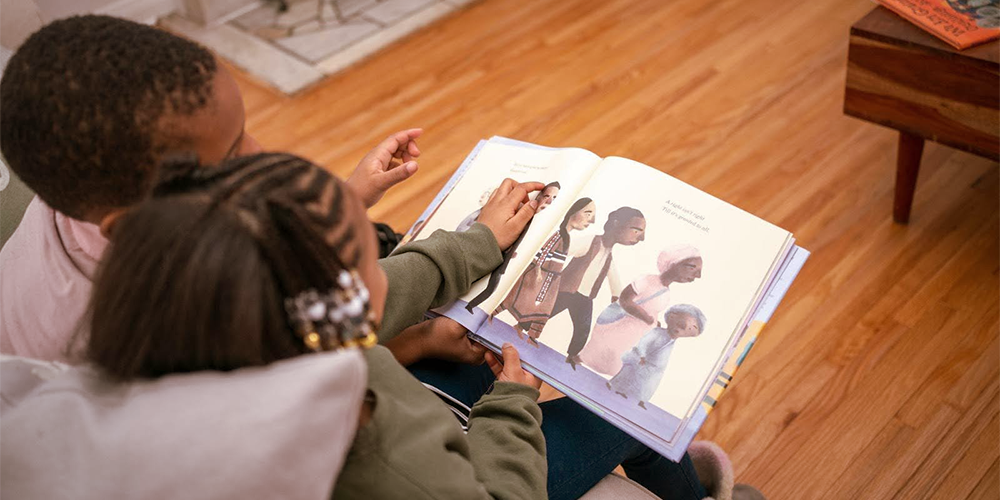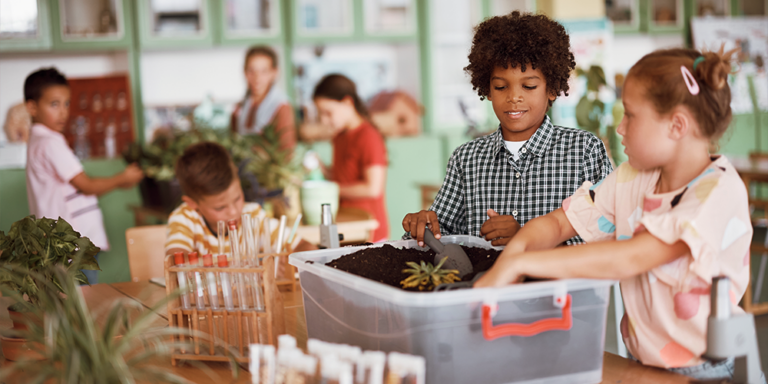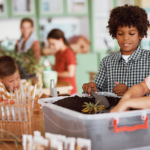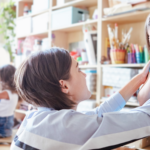Your students already know what’s going on in the world. The question is: Where are they getting their information?
When we don’t talk to kids about social justice, they learn about it from social media, friends at school, and other sources that may not always be accurate or even well-intentioned. Without a trusted adult to speak to about these topics, kids are likely to develop confusion, fear, anxiety, bias, and in some cases, even hatred.
The way we discuss social justice with young people is important. It’s crucial to approach these conversations thoughtfully, ensuring we provide support, clarity, and hope.
Here is a simple, step-by-step process to guide any conversation about social justice:
1. Acknowledge the Topic
When you want to talk about a social justice topic, the first step is simply to bring it up. This is particularly important if the topic has become an event or discussion in the media, as your learners are probably already hearing about it. In this case, ignoring or dismissing it can lead to confusion and anxiety. Acknowledgment shows children that their concerns are valid and that it’s okay to talk about difficult subjects. Often the best way to introduce a new social justice topic is through a children’s book. Read the book together, and use that story to start the conversation. If you’re just getting started with teaching social justice, here are 5 social justice picture books for beginners(Open Link in new tab).
2. Check for feelings and understanding.
Engage with learners to understand their emotions regarding the topics or events. After reading a book, you could ask: “How did this story make you feel about [topic]?” When it comes to world events, this step is essential for understanding their level of fear, confusion or misinformation, helping you tailor your explanations to their needs. Encourage kids to share what they know, think they know, or have heard about the topic in the past. For example, you might ask: “In this story, we learned about the environment and climate change. What have you heard about climate change before?” This conversation can reveal misconceptions and provide a clearer picture of what information they need or want to know.
3. Encourage Questions
Create a space where children feel safe to ask questions. This helps them understand the world around them and reassures them that their curiosity is both valid and valued. It also will help them feel safe to come to you when they’re worried about current events or social justice issues in the future. You can do this by asking directly what questions they have and being careful to not show discomfort when they do ask questions (no matter how uncomfortable the question may be!)
4. Explain and Answer Honestly
Clarify misunderstandings with truthful, age-appropriate information. Answer their questions in direct and simple ways. If you don’t know the answer to something, tell them you’ll look it up and get back to them, or look it up together. This shows them that it’s okay to not have all the answers and to admit when you don’t know something. It also can be a great way to teach about digital media literacy if you decide to do some research to learn more together. It’s important to strike a balance of providing needed information without overwhelming kids with distressing details. Remember that this conversation can be ongoing, so you don’t need to give them all of the information the first time it comes up.
5. Make Connections
Help kids relate to the topic by linking it to concepts they understand. Drawing parallels to their experience or knowledge makes complex issues more relatable and easier to comprehend. For example, if the story is about immigration, you can ask your students if they’ve ever been in a place where they didn’t know anybody or where they felt different in some way. Then ask them to imagine how that might feel for kids who are immigrants. If the story is about gender identity, you can ask kids to think about the ways they feel connected (or not connected) to their own gender, and how they might feel if someone refused to call them by the correct pronouns. If you’re talking about climate change, you can ask kids what would happen to their favorite toy if they didn’t take care of it. Over time, it would become worn down and broken, and that also happens to our planet when we don’t take care of it. Tangible examples help kids make sense of new and abstract concepts.
6. Uplift the Situation
When learning about a difficult topic, try to highlight positive aspects, such as community support and activism. This approach can help maintain a sense of hope and demonstrate the power of collective goodwill. For example, look for people who are working hard to fix this issue, today and in the past. Look at ways the issue has brought people together and created good in the world. This helps kids avoid hopelessness, overwhelm, and anxiety.
7. Move Towards Action
Encourage learners to think about constructive actions they can take, however small. Constructive action is often simply educating ourselves together, so remind kids that knowledge can be powerful. It could also be letter writing, raising awareness, or organizing some kind of small event, like a guest speaker or food drive. Taking action gives children a sense of agency and the feeling that they can make a difference, transforming feelings of helplessness into proactive engagement.
This framework will guide any conversation about social justice with kids, whether it’s your first conversation about this topic or you discuss it regularly. Having these conversations with your students will ensure that they are informed, respected, and heard. By approaching these conversations with care, we can empower our young learners to navigate a complex world with understanding, empathy, and hope.
Want an easy way to start incorporating these conversations into your classroom? Download the Classroom Representation Checklist(Open Link in new tab) for ideas on how to integrate justice into your classroom this year.
About the Author

Dr. Shelby Kretz is the creator of Little Justice Leaders(Open Link in new tab), an organization that provides social justice education resources for educators and families. Little Justice Leaders offers a monthly subscription box for parents and teachers that provides resources each month to learn about social justice and has sent over 17,000 learning kits to parents and teachers around the world. Shelby earned her Ph.D. in Education from UCLA, and her dissertation explored social justice education at the elementary school level. Over the past decade, Shelby has worked with thousands of parents, teachers, and school leaders to bring social justice education to elementary-aged kids.
Connect with Little Justice Leaders on Instagram(Open Link in new tab).







